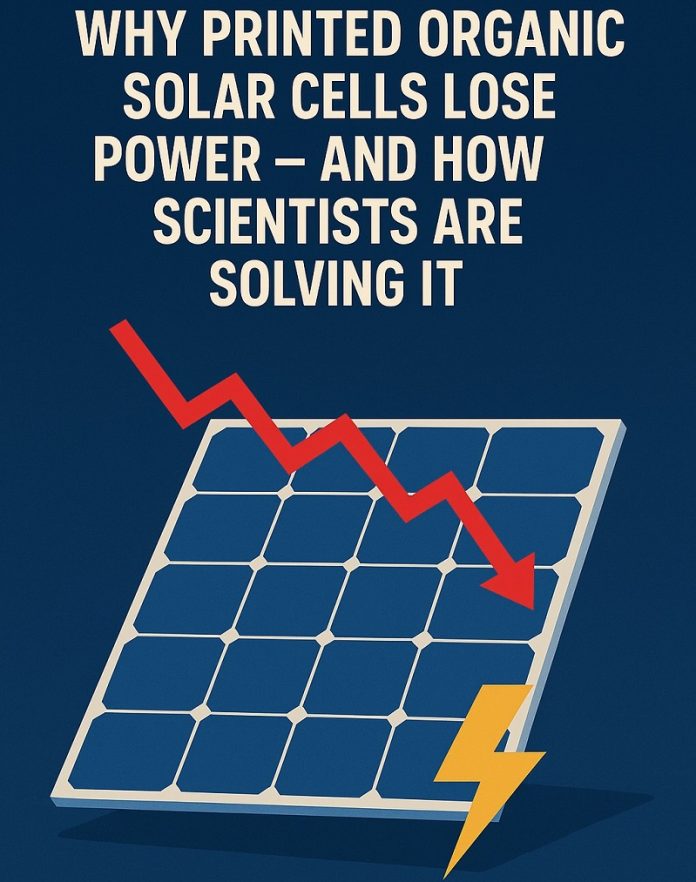
Organic solar cells—solar panels made from special carbon-based materials—offer an exciting future.
They’re lightweight, flexible, and can be made quickly and cheaply using printing techniques, almost like printing a newspaper.
But there’s one big problem: they aren’t as efficient as traditional silicon solar panels, and now scientists have figured out why.
A team led by Professor Dr. Carsten Deibel and his assistant Maria Saladina at Chemnitz University of Technology has been studying these organic solar cells. Their goal is to understand how they work so they can improve their performance.
The big issue is something called transport resistance.
This happens because the materials used in organic solar cells are not well-ordered. Since these solar cells are printed from a type of “solar ink,” the layers that absorb sunlight end up being messy and disorganized.
That disorder slows down the movement of electrical charges—specifically electrons and holes—that are created when the sun hits the panel.
“When charge carriers move slowly, they get in their own way,” says Saladina. “This resistance to movement lowers the fill factor, which is a measure of how well a solar cell converts sunlight into power.”
To study this, the researchers tested different types of organic solar cells. They measured how much current and voltage the cells produced under light and compared these results to a special technique called suns-Voc.
This method creates an ideal current-voltage curve that doesn’t suffer from transport resistance. By comparing the two, they clearly saw how much power was lost due to slow-moving charges.
The results, published in Reports on Progress in Physics, showed that transport resistance plays a much bigger role in performance loss than previously thought. But there’s good news: this is not a dead end. It just means scientists need to rethink how they design and optimize these solar cells.
In a follow-up article published in Advanced Energy Materials, the research team explains the physics behind transport resistance in more detail. They believe that with a deeper understanding, printed organic solar cells can become much more efficient.
Their work is part of the DFG Research Unit POPULAR, which continues to explore and improve these promising solar technologies. As Prof. Deibel puts it, “We’re now starting to understand the basics, step by step—and that’s how real progress begins.”



